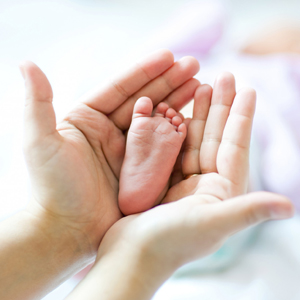Posterior Vaginal Prolapse (Rectocele)
Giggles Hospital’s Expertise in Posterior Vaginal Prolapse (Rectocele) Treatment
Rectocele is a condition where the tissue wall between the rectum and vaginal wall weakens and collapses. This causes the front wall of the rectum to sag and bulge into the vagina, and in severe cases, protrude outside the vaginal opening due to insufficient support from pelvic floor muscles and ligaments.
Rectal prolapse and a rectocele are not the same. Rectal prolapse is when the rectum pushes through the anal orifice. Rectocele frequently coexists with other types of pelvic organ prolapse, in which your uterus or bladder also shift out of place.
What are the Symptoms of Posterior Vaginal Prolapse?
Not all cases of rectoceles result in symptoms. When they do, they typically hurt less and are more unpleasant or uncomfortable. Rectocele symptoms include:
- A feeling of pressure or fullness in the vagina or rectum
- A soft tissue growth that might or might not protrude through the vagina
- Feeling that the rectum hasn’t entirely emptied after urinating
- Having frequent urges to go to the bathroom
- Dyspareunia during sexual activity (pain during sexual intercourse)
- Feeling a decrease in muscular tone or a sense of looseness in your vagina
Urinary incontinence may occur if you have a rectocele and another prolapse condition in which your bladder sags. You might also dribble or experience frequent urination urges.
What are the Causes of Posterior Vaginal Prolapse?
Prolonged pressure on the pelvic floor results in rectocele. Rectocele risk factors could include –
- Pregnancy and childbirth, particularly multiple vaginal births or labors that end in tearing or episiotomies
- Aging
- Persistent constipation
- Obesity
- Previous surgery
- Heavy lifting
- Chronic bronchitis or cough
How is Posterior Vaginal Prolapse Diagnosed?
Our Gynecologists at Giggles Hospitals, Best Women And Children Hospital in Kukatpally can frequently identify a rectocele after a comprehensive physical examination and medical history. The diagnosis could be –
Pelvic Exam
During a pelvic exam, your healthcare provider may evaluate the strength of your pelvic floor muscles and check for symptoms of prolapse in the vaginal canal. They may ask you to contract and release your pelvic floor muscles as if stopping urination or to squeeze your stomach as if straining for a bowel movement. This can help visualize the extent of the prolapse.
Imaging
Diagnosing rectoceles typically does not require imaging. However, in certain cases, a transvaginal ultrasound may be requested to check for enterocele (prolapse of the small intestine). A defecography or specialized X-ray can also be used to assess rectal changes during urination and determine the severity of the rectocele.
How is Posterior Vaginal Prolapse Treated?
The severity of posterior vaginal prolapse will determine your course of treatment, which include –
- Simple self-care techniques, including doing Kegel exercises to strengthen pelvic muscles.
- A silicone object called a vaginal pessary is inserted into the vagina. The tool supports tissues that are swollen. Regular removal of a pessary is required for cleaning.
The doctor at the Gynecologist hospital might also perform surgery if the condition requires more extensive treatment. The excess, stretched tissue that causes the vaginal bulge is frequently removed during surgery. The pelvic tissues are then supported with sutures. The uterus may need to be removed (hysterectomy) if prolapsed. More than one prolapse type can be repaired during the procedure.
Why Choose Giggles Hospitals?
Posterior vaginal prolapse is a common medical condition that might cause severe discomfort. Sometimes, the bulge may even protrude out of the vaginal opening, which can be a matter of concern. Thus, you might be able to curb the condition with proper care at Giggles Hospital. Giggles Hospital for Best women’s hospital near me, offers comprehensive care and specialized treatment options to address and manage this condition effectively.




